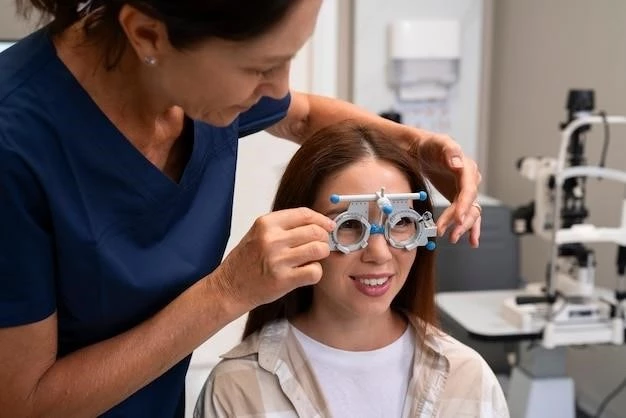Overview of Retinoblastoma
Retinoblastoma is a malignant tumor of the developing retina that occurs in children, usually before age five years.
Definition and Characteristics
Retinoblastoma is a rare form of cancer that rapidly develops from the immature cells of the retina, the light-detecting tissue of the eye. It is the most common primary malignant intraocular cancer in children, typically occurring before the age of five. The disease can manifest as unilateral or bilateral retinoblastoma, presenting with characteristic features such as leukocoria (white pupil) and various growth patterns within the eye.
Incidence and Common Age of Diagnosis
Retinoblastoma presents a mean age of diagnosis of 24 months for unilateral cases and 15 months for bilateral cases. It is a rare condition, with an incidence of approximately 1 in 18,000 live births. This cancer primarily affects young children under the age of five, making it crucial to recognize early signs and symptoms for timely diagnosis and management.

Causes and Genetic Factors
Retinoblastoma is primarily caused by mutations in the RB1 gene located on chromosome 13. The loss of RB1 function leads to the development of this rare eye cancer٫ with nearly all cases exhibiting biallelic loss of RB1. Additionally٫ other genetic and epigenetic changes contribute to the progression of retinoblastoma by making the cells highly susceptible to cancerous transformation. Understanding the genetic factors involved is crucial for effective management of the disease.
Role of RB1 Gene Mutations
The development of retinoblastoma is closely linked to mutations in the RB1 gene, located on chromosome 13. Alterations in the RB1 gene play a crucial role in the initiation and progression of this eye cancer. Loss of RB1 function due to mutations leads to the formation of retinoblastoma, highlighting the significance of genetic factors in the pathogenesis of this disease.
Retinoblastoma can be either hereditary, caused by a germline mutation in the RB1 gene, or non-hereditary, arising from sporadic mutations. Hereditary retinoblastoma often leads to multiple tumors in one or both eyes and is commonly diagnosed before the age of one. Understanding the distinction between hereditary and non-hereditary forms is crucial for personalized treatment strategies.

Clinical Presentation and Symptoms
Children with retinoblastoma may present with nodular, white masses in the eye with recognizable symptoms such as leukocoria (white pupil), strabismus (crossed eyes), poor vision, or redness; Understanding these clinical signs is crucial for early detection and prompt management.
Hereditary vs. Non-Hereditary Retinoblastoma
Retinoblastoma can manifest as hereditary, linked to germline mutations in the RB1 gene, or non-hereditary, resulting from sporadic genetic alterations. Hereditary retinoblastoma often leads to bilateral tumors and occurs in early childhood, emphasizing the importance of genetic predisposition in disease development.
Recognizable Symptoms in Children
Children with retinoblastoma may exhibit recognizable symptoms such as leukocoria (white pupil), strabismus (crossed eyes), poor vision, or redness in the affected eye. Timely recognition of these symptoms is crucial for early diagnosis and intervention in children with possible retinoblastoma.
Diagnosis and Treatment
Diagnosing retinoblastoma involves various diagnostic techniques such as ophthalmoscopy, ultrasound, CT scans, and MRI. Treatment modalities for retinoblastoma include chemotherapy, radiation therapy, laser therapy, cryotherapy, and surgeries like enucleation when necessary. The choice of treatment depends on the stage and extent of the disease.
Diagnostic Techniques and Screening
Diagnosing retinoblastoma involves various diagnostic methods such as ophthalmoscopy, ultrasound, CT scans, and MRI to visualize the tumor in the eye. Screening for retinoblastoma is crucial in children with a family history of the disease or certain genetic predispositions, allowing for early detection and appropriate management strategies.
Common Treatment Modalities
Treatment for retinoblastoma may involve chemotherapy, radiation therapy, laser therapy, cryotherapy, or surgical procedures like enucleation for advanced cases. The choice of treatment depends on factors such as tumor size, location, and the overall health of the child. Multidisciplinary approaches are often used to ensure the best possible outcomes in managing retinoblastoma.
Prognosis and Management
Survival rates and long-term effects of retinoblastoma treatment are essential for determining individualized management strategies. Advancements in personalized treatment approaches play a crucial role in improving outcomes for patients with retinoblastoma. Gaining insights into the prognosis and effective management of this condition is vital in ensuring quality care and outcomes for those affected.
Survival Rates and Long-Term Effects
Survival rates in retinoblastoma are generally high, especially with early detection and appropriate treatment. However, long-term effects may include vision loss, impact on eye function, and potential psychosocial implications. Understanding the survival outcomes and long-term effects is essential in optimizing care and support for individuals with retinoblastoma.
Individualized Treatment Approaches
Personalized treatment approaches in retinoblastoma management consider factors such as the International Classification of Retinoblastoma (ICRB) staging, genetic mutation status, psycho-social aspects, cultural considerations, and available resources. Tailoring treatment plans based on these individual factors enhances the effectiveness of managing retinoblastoma while considering the unique needs of each patient.
Research and Advancements
Current research in retinoblastoma includes the development of human retinoblastoma organoid models to mimic disease progression and innovative treatment strategies. Clinical trials exploring targeted therapies and immunotherapies are paving the way for novel approaches in managing retinoblastoma. These advancements highlight the ongoing efforts to improve outcomes for patients with this rare eye cancer.
Human Retinoblastoma Organoid Model
A significant advancement in retinoblastoma research is the development of a human retinoblastoma organoid model. This model aims to replicate the cell-of-origin and the intricate steps involved in retinoblastoma genesis. By utilizing this innovative model, researchers can gain insights into disease progression and test new therapeutic strategies more effectively.
Clinical Trials and Novel Therapies
Unfortunately, no new information on the Internet about ‘Retinoblastoma’ was available, at this time.
